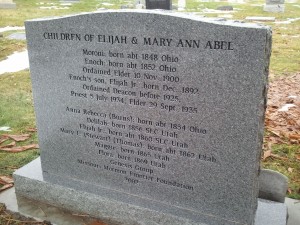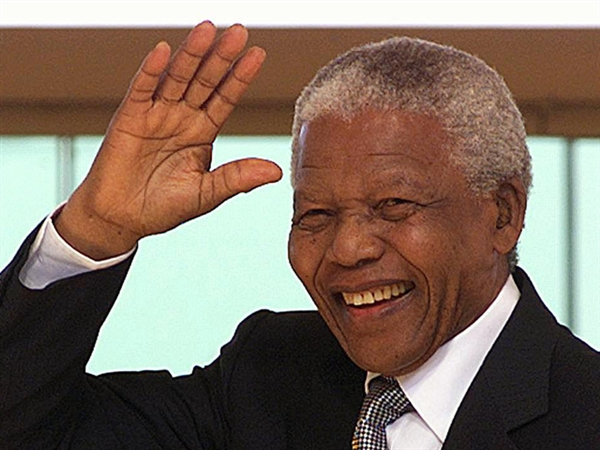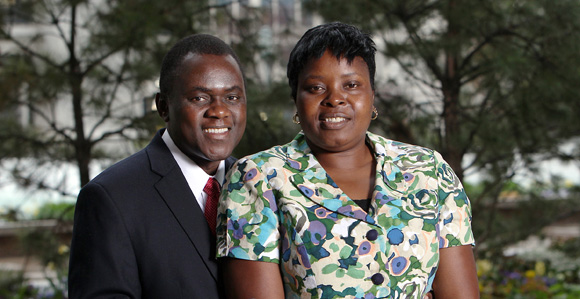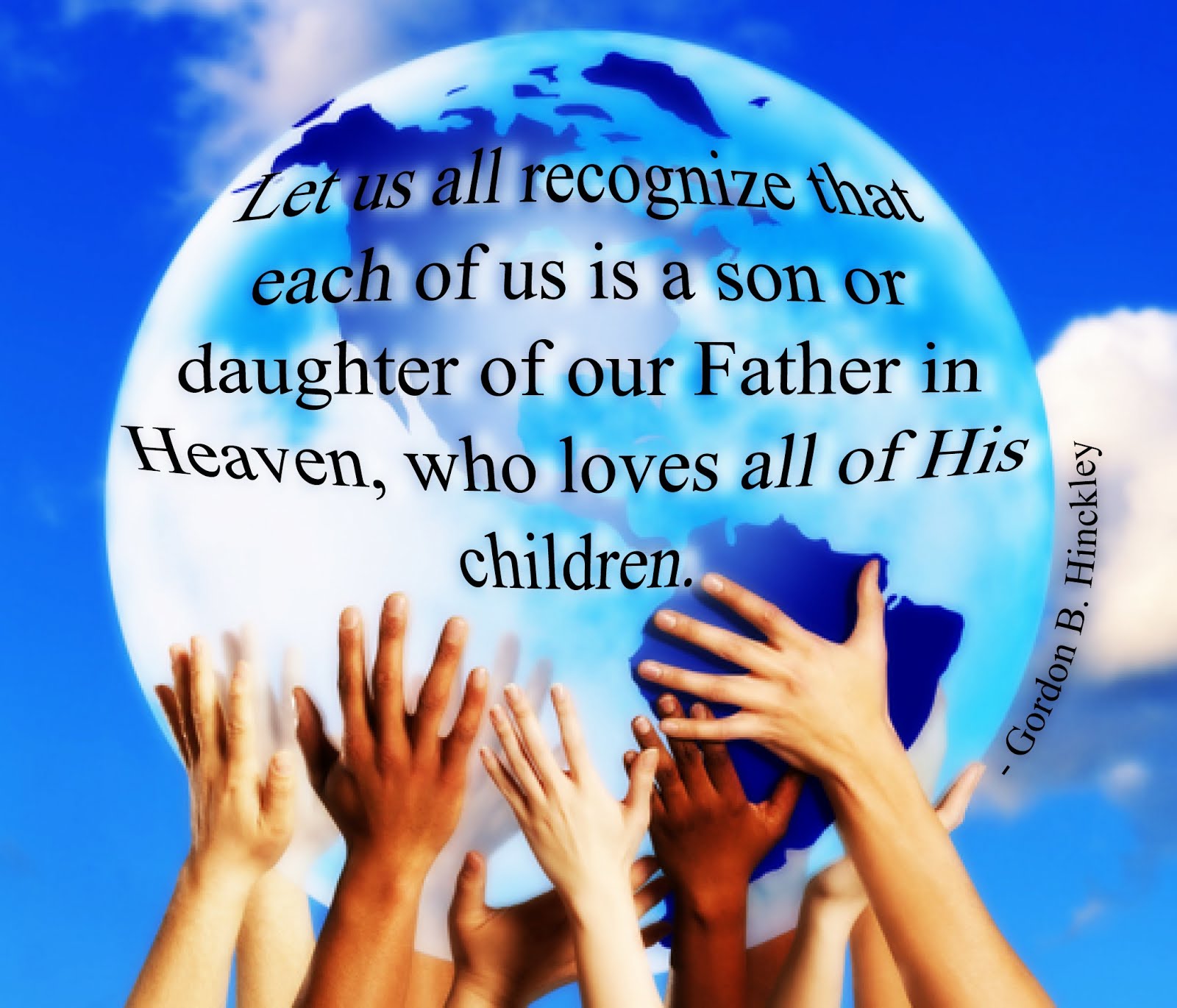Following the death of Nelson Mandela, The Church of Jesus Christ of Latter-day Saints (inadvertently referred to as the “Mormon” Church by the media and others) released a statement expressing its condolences at the loss of a national and world leader.
Remembering the Legacy of Nelson Mandela
 Former South African President and Nobel Peace Prize winner, Nelson Mandela, passed away on Thursday, 5 December 2013 at the age of 95. Born on 18 July 1918 in Mvezo, Transkei, South Africa, he was the son of Gadla Henry Mphakanyiswa, a counselor to the royal house of the Thembu tribe, and Nosekeni Fanny Mandela. The name given him at birth was Rolihlahla Dalibhunga Mandela. He was later given the name Nelson by a school teacher.
Former South African President and Nobel Peace Prize winner, Nelson Mandela, passed away on Thursday, 5 December 2013 at the age of 95. Born on 18 July 1918 in Mvezo, Transkei, South Africa, he was the son of Gadla Henry Mphakanyiswa, a counselor to the royal house of the Thembu tribe, and Nosekeni Fanny Mandela. The name given him at birth was Rolihlahla Dalibhunga Mandela. He was later given the name Nelson by a school teacher.
Throughout his life he was known as both “the world’s most famous political prisoner” and “South Africa’s Great Black Hope.” [1] In a CNN report following his death, Mandela was described as a “freedom fighter, prisoner, moral compass and South Africa’s symbol of the struggle against racial oppression.” [2] He was the first Black President of the Republic of South Africa having been elected on 29 April 1994, and serving until June 1999.
In 1942, Mandela received a law degree from the University of South Africa. In 1952, he opened the first Black law partnership in South Africa with friend Oliver Tambo. In July 1952, he was charged with violating the Suppression of Communism Act. On 12 June 1964, he was sentenced to life in prison for four counts of sabotage. On 11 February 1990, he was released from prison after serving more than 27 years for opposing apartheid. And in 1993 he was the honored recipient of the Nobel Peace Prize for his efforts “to dismantle South Africa’s legacy of racial segregation, inequality and institutionalized racism.” [3]
Speaking concerning the passing of Nelson Mandela, South African President Jacob Zuma said, “Our nation has lost its greatest son. Our people have lost a father. What made Nelson Mandela great was precisely what made him human. We saw in him what we seek in ourselves.” [2] And President Barack Obama stated, “We’ve lost one of the most influential, courageous and profoundly good human beings that any of us will share time with on this Earth. He no longer belongs to us — he belongs to the ages.” [2]
On the day of his passing, the First Presidency of The Church of Jesus Christ of Latter-day Saints issued the following statement:
With the rest of the world, we mourn the passing of revered statesman Nelson Mandela. His courage, kindness and extraordinary moral leadership have been an example to all people. We express our love and sympathies to his family and the people of South Africa as they remember his extraordinary life. [4]
LDS Church New Topical Study: Race and the Priesthood
 Shortly following the death of Nelson Mandela, and the release of a statement expressing condolences by The Church of Jesus Christ, a new page was published on its official website which deals with the topic of “Race and the Priesthood.” This is a topic which has generated much discussion by members, as well as, non-members of the Church. This new enhanced page is one among several new “Gospel Topics” pages that are now being published on LDS.org. This particular page was preceded by pages discussing the topics of “First Vision Accounts” and “Are Mormons Christians?” “The improved pages are intended to use scholarship, historical perspectives and outside resources transparently to help parents answer questions children might come across online, church leaders said.” [5]
Shortly following the death of Nelson Mandela, and the release of a statement expressing condolences by The Church of Jesus Christ, a new page was published on its official website which deals with the topic of “Race and the Priesthood.” This is a topic which has generated much discussion by members, as well as, non-members of the Church. This new enhanced page is one among several new “Gospel Topics” pages that are now being published on LDS.org. This particular page was preceded by pages discussing the topics of “First Vision Accounts” and “Are Mormons Christians?” “The improved pages are intended to use scholarship, historical perspectives and outside resources transparently to help parents answer questions children might come across online, church leaders said.” [5]
Elder Stephen E. Snow, Church historian commented,
I think in this day and age it’s become apparent that we really do need to provide a series of answers that will help our members better understand these chapters of our history.
Church leaders wanted to help members study important topics and provide them with the best information available. [5]
“Gospel Topics” pages such as “Race and the Priesthood” are a warm welcome as critics’ theories and hypothesis regarding church doctrine which they have long believed was the basis for Blacks being denied the priesthood for a period of time in LDS Church history, a ban which was resolved through revelation given in 1978, can finally be repudiated based on historical facts which are being revealed. This page will also help put to rest the question that even some faithful, well-intentioned members of The Church of Jesus Christ might ask or wonder about – “What is the Church hiding?” Elder Snow affirms that the Church is not hiding anything and that these pages are intended to better educate those who have questions and concerns.
Elder Snow further commented,
We’ve enlisted the aid of historians, church historians, scholars, church leaders as well as others to work carefully on these matters to make certain we have the facts as right as we know them today,” Elder Snow said, “and then to help our members understand them in the context of the time in our history and the time in American history, what was going in the world at the time. [5]
A New Beginning for LDS.org
Elder Paul B. Pieper, executive director of the Priesthood Department of The Church of Jesus Christ of Latter-day Saints, stated,
For the first time, we’re linking away from LDS.org resources. That’s new. We’ve never permitted anyone on LDS.org to link to sites off LDS.org. If you look at the bottom of these pages, you’ll see we link to the BYU scripture citation index and the Encyclopedia of Mormonism, for example. It’s really a new day for LDS.org, [6]
The use of outside sources was part of an effort to obtain the most accurate historical information regarding topics such as “Race and the Priesthood” that is available, thus drawing increased attention from historians.
LDS Church History: Race and the Priesthood
The race and priesthood topic page states:
In theology and practice, The Church of Jesus Christ of Latter-day Saints embraces the universal human family. Latter-day Saint scripture and teachings affirm that God loves all of His children and makes salvation available to all. God created the many diverse races and ethnicities and esteems them all equally.
The structure and organization of the Church encourage racial integration. A black bishop may preside over a mostly white congregation; a Hispanic woman may be paired with an Asian woman to visit the homes of a racially diverse membership. Church members of different races and ethnicities regularly minister in one another’s homes and serve alongside one another as teachers, as youth leaders, and in myriad other assignments in their local congregations. Such practices make The Church of Jesus Christ of Latter-day Saints a thoroughly integrated faith. [7]
“The church was established in 1830, during an era of great racial division in the United States,” the page says. [7] Joseph Smith, the first Prophet of The Church of Jesus Christ, was openly opposed to slavery, and in 1844, he campaigned for the presidency of the United States on an anti-slavery platform aimed at ending slavery by 1850. [8]
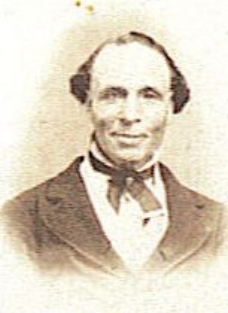 A few Black men were also ordained to the Priesthood during the time that Joseph Smith was Prophet of the Church. One of those men who were ordained to the Priesthood was Elijah Abel. Abel was baptized a member of the Church in 1832 by Ezekiel Roberts. [8] He would become the first Black man to be ordained to the Priesthood in the LDS Church, being ordained an Elder by Joseph Smith himself in March 1836. According to the testimony (Eunice Kinney: “My Testimony of the Latter-day Work”) of a Black sister in the Church, Eunice Kinney, the certificate of ordination was dated 3 March 1836. History also records that Abel was ordained a Seventy in December 1836 by Zebedee Coltin. [8]
A few Black men were also ordained to the Priesthood during the time that Joseph Smith was Prophet of the Church. One of those men who were ordained to the Priesthood was Elijah Abel. Abel was baptized a member of the Church in 1832 by Ezekiel Roberts. [8] He would become the first Black man to be ordained to the Priesthood in the LDS Church, being ordained an Elder by Joseph Smith himself in March 1836. According to the testimony (Eunice Kinney: “My Testimony of the Latter-day Work”) of a Black sister in the Church, Eunice Kinney, the certificate of ordination was dated 3 March 1836. History also records that Abel was ordained a Seventy in December 1836 by Zebedee Coltin. [8]
 After the martyrdom of Joseph Smith in the Carthage jail in Carthage, Illinois on 27 June 1844, Brigham Young became the Prophet and President of the Church. In 1852, he “publicly announced that men of Black African descent could no longer be ordained to the priesthood. …” [6] In that same year, he exhorted that in the future Black church members would “have (all) the privilege and more” enjoyed by other members. [6]
After the martyrdom of Joseph Smith in the Carthage jail in Carthage, Illinois on 27 June 1844, Brigham Young became the Prophet and President of the Church. In 1852, he “publicly announced that men of Black African descent could no longer be ordained to the priesthood. …” [6] In that same year, he exhorted that in the future Black church members would “have (all) the privilege and more” enjoyed by other members. [6]
“We’ve enlisted the aid of historians, church historians, scholars, church leaders as well as others to work carefully on these matters to make certain we have the facts as right as we know them today,” Elder Snow said, “and then to help our members understand them in the context of the time in our history and the time in American history, what was going in the world at the time.
“It’s been a very interesting few months of research and scholarly pursuit as we’ve been able to clearly research some of these issues and chapters.” [6]
The race and the priesthood page also includes videos of Black church members talking about their perspectives.
About Keith L. Brown
Keith L. Brown is a convert to The Church of Jesus Christ of Latter-day Saints, having been born and raised Baptist. He was studying to be a Baptist minister at the time of his conversion to the LDS faith. He was baptized on 10 March 1998 in Reykjavik, Iceland while serving on active duty in the United States Navy in Keflavic, Iceland. He currently serves as the First Assistant to the High Priest Group for the Annapolis, Maryland Ward. He is a 30-year honorably retired United States Navy Veteran.

